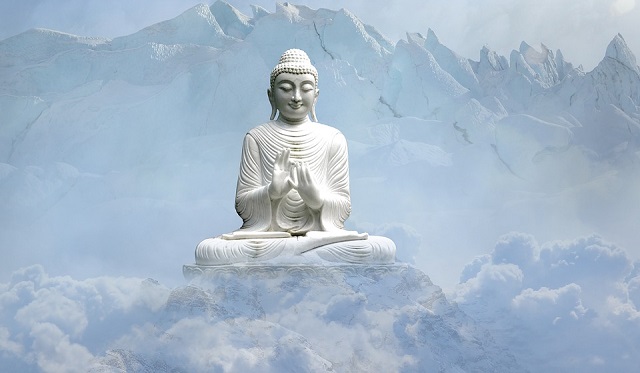How often do we wish that someone could explain what this mysterious life is all about?
Perhaps if someone gave us a handbook, we could deal with life better. Thankfully, someone did give us this handbook thousands of years ago—but it obviously wasn’t what we expected.
I consider the Four Noble Truths from Buddhism the handbook of life.
There are countless explanations and debates about “what life is”—however, the Buddha eloquently delineated our existence using only four points: the acknowledgment of dukkha (suffering), its origin, its cessation, and the means to cessation.
Voilà! Buddha was the person who saw our Rubik’s Cube for what it is and came out with the solution. Unfortunately, most us were not satisfied with the truth he recognized and explained. We prefer to keep playing with our unsolved Rubik’s Cube, doing things our own way—trusting that we will find a more satisfying outcome.
Buddha was simply a human being who walked on earth—just like us. The only difference between us and Gautama Buddha is the way we look at the world. When Buddha witnessed the misery around him—old age, sickness, death—a wave of compassion and empathy hit him hard. He couldn’t go about his day normally, like we often do when we witness misery.
We lose so much on a daily basis; yes, we grieve for a while, but we slowly drift back into creating permanence and seeking happiness from transient things. The Buddha didn’t do this.
Although he was the son of a king and had everything he could wish for at his disposal, the reality of the world struck him. When he witnessed misery, he felt compelled to do something to alleviate the torment that appeared to be our destiny.
Gautama Buddha longed for an inner transformation, rather than an outward one. He didn’t go about trying to stop death or disease from happening. He didn’t beg people not to leave each other or try to create safety around possessions. The Buddha knew that the real misery was inside us—so he worked on the solution from the inside out. This is why he sat under a tree and meditated until he found the truth.
This is when the Four Noble Truths were born. But what is our reaction to those truths? And, what are they really about?
1. The acknowledgment of dukkha.
Dukkha means suffering. Now, the words “suffering” or “misery” may sound rough or pessimistic—but what Buddha meant by suffering is more like disappointment. These are the the things that cause us dejection and dissatisfaction, such as death, disease, separation, loss, and so forth. “Dukkha” manifests in many forms in our daily lives. It could be as simple as losing an object we dearly love, thus feeling discontented—or breaking up with our partner and feeling miserable.
Dukkha is also not always dependent on an external condition. Having a mind and body that both produce endless reactions, thoughts, and emotions, our misery could manifest as simply waking up in a bad mood for no reason. The Buddha was quite realistic about this. He acknowledged this truth and accepted it.
Our own perception:
Although we experience dissatisfaction on a personal level and see it all around us, we tend to reject it. Our minds constantly rebel against the fact that life is not ideal. We want pleasure to last and death to vanish—we want to stay forever young, never fall ill, and keep our loved ones with us always. We don’t accept dukkha and constantly seek perfection—within ourselves and externally.
2. The origin of dukkha.
When the Buddha acknowledged the existence of suffering, he dug deeper and found out that its origin lies in our own minds. Undoubtedly, suffering exists. Unsatisfying situations occur; he didn’t deny this. But, he perceived our minds as the fuel that keeps adding to the fire.
Our miseries are like a fire that will eventually die on its own—but through our minds and our thoughts, we keep re-fueling it. The Buddha recognized that the mind is where desire, hatred, greed, ignorance, attachment, and longing for permanence reside.
Our own perception:
We refuse to believe that “it’s all in our heads.” It is our automatic nature to blame our unhappiness on external factors (including people, events, or life itself). We shouldn’t deny that unsatisfactory conditions take place—but, unlike the Buddha, we don’t recognize our role in their perpetuation.
Instead of looking within, we look outwardly and yearn to amend our external circumstances. When we fail at this—and we certainly will—our misery adds up, and we keep looking for everlasting happiness outside of ourselves.
3. The cessation of dukkha.
Now that the Buddha had located the origin of misery, he was certain about how to terminate it. He needed no more clues—no more need to look further than this. He understood that we cannot change our external events all the time. Therefore, we’d need to work on how our minds respond to those events.
The Buddha gave us the solution, which requires looking closely at the false sense of self that we create for ourselves and everyone else. Through realizing that we don’t exist in the sense we think we do—and seeing that everything eventually passes away—we can work on not grasping at things (or people) and craving less.
Our own perception:
Instead of realizing that attachment and craving are the main cause of our unhappiness, we automatically want to attach more. When we feel we’re on the verge of losing something or someone, we hold on even more tightly.
This is our self-made cure for dukkha: trying to keep what’s about to pass away. We basically work the opposite way of the Buddha—we start from the outside first, and only when we know that we can’t alter it, do we attempt to look within.
4. The path leading to the cessation of dukkha.
It is known as the Eightfold Path. This is when Buddha handed us a list of “guidelines” to vanquish misery once and for all: Right View, Right Intention, Right Speech, Right Action, Right Livelihood, Right Effort, Right Mindfulness, and Right Concentration.
According to the Buddha, through wisdom (pannā), morality (silā), and concentration (samādhi), we will all be liberated from the chains of our minds.
Our own perception:
We allow outward events to dictate our actions and reactions. Although we have been blessed with wisdom, it is challenging for us to put it into action when we are filled with anger, hopelessness, and confusion. We’re like a thirsty man sitting on top of a well and asking for water. We don’t know that water is at our disposal…if only we’d open our eyes.
~
Relephant:
Buddhism & Relationships: the Four Noble Truths of Love.
The Four Noble Truths. Isn’t suffering important for growth?
~
Author: Elyane Youssef
Image: Pixabay
Editor: Yoli Ramazzina
Copy editor: Travis May









Read 11 comments and reply